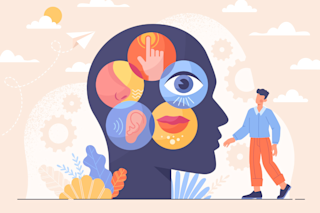Anyone who's ever watched a horror film will know that the sound of two clashing notes evokes a visceral response in most people. Among Western listeners there's a strong preference for consonance, which exists even from infancy; consonance is the pleasing mixture of two tones, while dissonance is their clashing. (For a good example of both, see this video.) It's controversial whether the same preferences exist in other cultures, but new research indicates the preferences might be wired in our brains. The prevailing theory of music in the brain is that dissonant combinations share frequencies that are a bit too close. When these frequencies are perceived by the cochlea, the part of the inner ear that translates sounds to nerve impulses, they can't be well distinguished. Because similar frequencies are processed next to one another on the cochlea, their nerve signals can interfere with one another. The perception is a ...
Musical Harmony May Be Hardwired in the Brain
Discover how preferences for consonance shape our musical experience and why beating impacts enjoyment across all listeners.
More on Discover
Stay Curious
SubscribeTo The Magazine
Save up to 40% off the cover price when you subscribe to Discover magazine.
Subscribe













